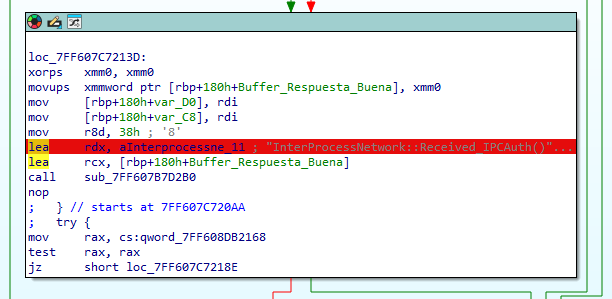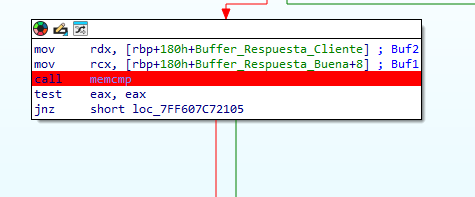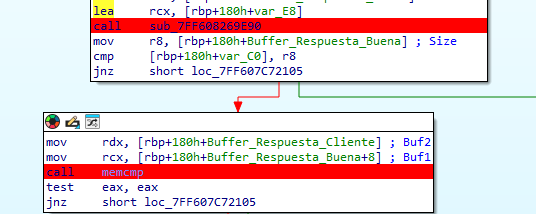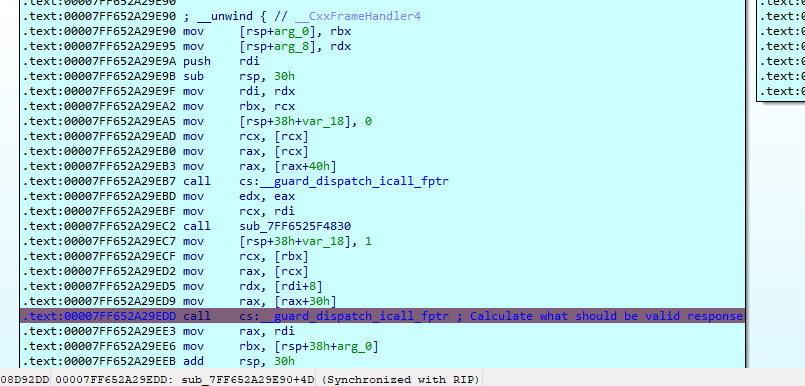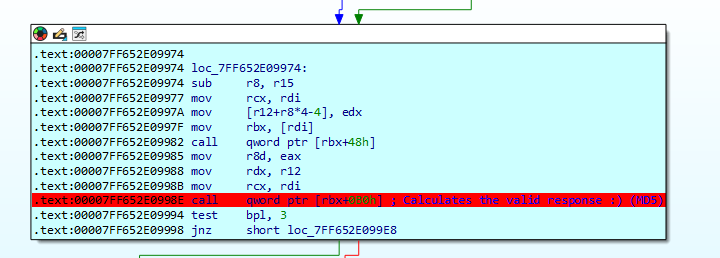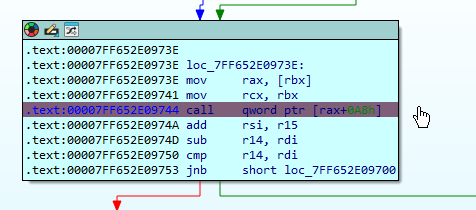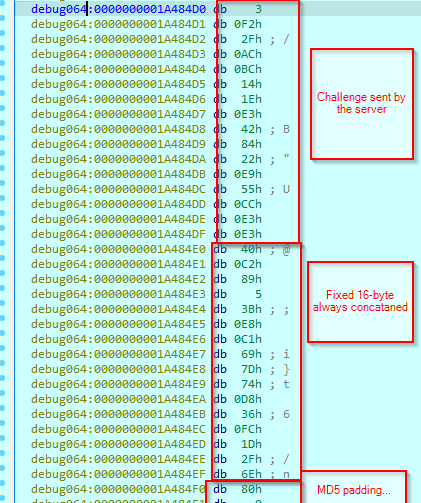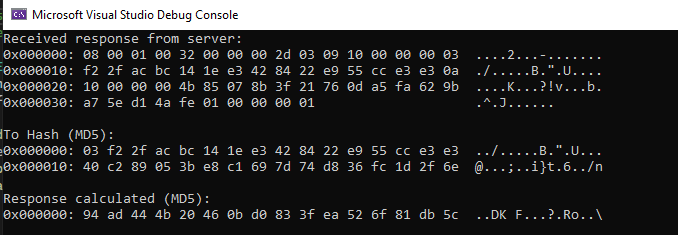Finding TeamViewer 0days. Part 2: Reversing the Authentication Protocol
I started reversing the client in order to find how the authentication was being made. I will skip this whole part as I finally ended understanding the authentication method revering the service.
Reversing the client was a tedious task because of Overlapped I/O, multiple threads handling it, CFG and so on. This conducted me so many times to rabbit holes and messy routes.
I think that showing the reversing process of the client will not contribute worthy to the post, so skipping it to the important part.
Summarizing the process:
- The client send a challenge in the Authentication Message we saw at part 1.
- The server responds with its challenge plus the calculated response from client challenge.
- The client should validate the challenge to detect that is no connecting to a rogue TV service. In our case we can omit this part, we only care about authenticating correctly to the service.
- The client calculates the response based on the server challenge and send it in a new message.
Where To Start?
When starting to reverse the client I thought that we had a very nice clue. We known that TeamViewer logs:
2024/05/26 19:03:04.770 3268 3660 S0!! InterProcessNetwork::Received_IPCAuth() invalid response
So, the first thing was to find this string. A simple search string in IDA returned the following cross reference.
Pulling back we can reach where the final compare is being made, checking if the response send by the client matches the correct value.
Following the process
When studying the process, the following function was the responsible for returning the expected output.
I will show the process that this functions follows.
This function is a helper that actually calls another one.
We finally ends (after another call to a helper), calling the function that performs all the magic.
We then end in a loop that calls one function in its body.
What is this function peforming?
I will show you the first lines of the decompiled code.
1
2
3
4
5
6
7
8
9
10
11
12
13
14
15
16
17
18
19
20
21
22
_int64 __fastcall sub_7FF7E93DD240(_DWORD *a1, _DWORD *a2)
{
[...VARS...]
v2 = a1[1];
v3 = a2;
v4 = a1[2];
v5 = a1[3];
v6 = a2[5];
v83 = *a2;
v85 = a2[1];
v7 = v2 + __ROL4__(*a2 + (v5 ^ v2 & (v4 ^ v5)) + *a1 - 680876936, 7);
v80 = a2[2];
v8 = v7 + __ROL4__(v85 + (v4 ^ v7 & (v2 ^ v4)) + v5 - 389564586, 12);
v84 = v3[3];
v9 = v8 + __ROL4__(v80 + (v2 ^ v8 & (v7 ^ v2)) + v4 + 606105819, 17);
v78 = v3[4];
v10 = v9 + __ROL4__(v84 + (v7 ^ v9 & (v7 ^ v8)) + v2 - 1044525330, 22);
v77 = v3[6];
v11 = v10 + __ROL4__(v78 + (v8 ^ v10 & (v9 ^ v8)) + v7 - 176418897, 7);
v12 = v11 + __ROL4__(v6 + (v9 ^ v11 & (v10 ^ v9)) + v8 + 1200080426, 12);
v13 = v12 + __ROL4__(v77 + (v10 ^ v12 & (v11 ^ v10)) + v9 - 1473231341, 17);
Do you recognize it? It so, congrats. If not, do not worry, me too at the first time and ChatGPT helped me.
This is the MD5 Core function. So basically TV is performing MD5 hashing. Let’s take a look at what is being hashed.
In this example execution of the exploit we received the following challenge.
03 f2 2f ac bc 14 1e e3 42 84 22 e9 55 cc e3 e3
But, when analyzing the parameters passed to the MD5 hashing core function we see the following.
So TV concatenates the challenge the following bytes
40 C2 89 05 3B E8 C1 69 7D 74 D8 36 FC 1D 2F 6E
I have not tested it, but I believe this can be changed with the IPCPassword registry key we saw in part 1.
One important thing, this is the password used by the SERVER challenge.
For CLIENT challenges a different one is used: 43 6E 67 62 F2 5E A8 D7 04 E5 22 BF A5 5D A1 6A
So basically in order the authenticate we just need to MD5(CHALLENGE+STATIC KEY).
After that we then need to send the ControlIPC indicating the correct PID. I believe that any current process PID could be valid, but I have not tested it. In the exploit the current process PID is sent. Indicating a PID for a non-existent process will make it fail.
In Part 3 we will have fun writing the exploit and finally use it to elevate privileges.
